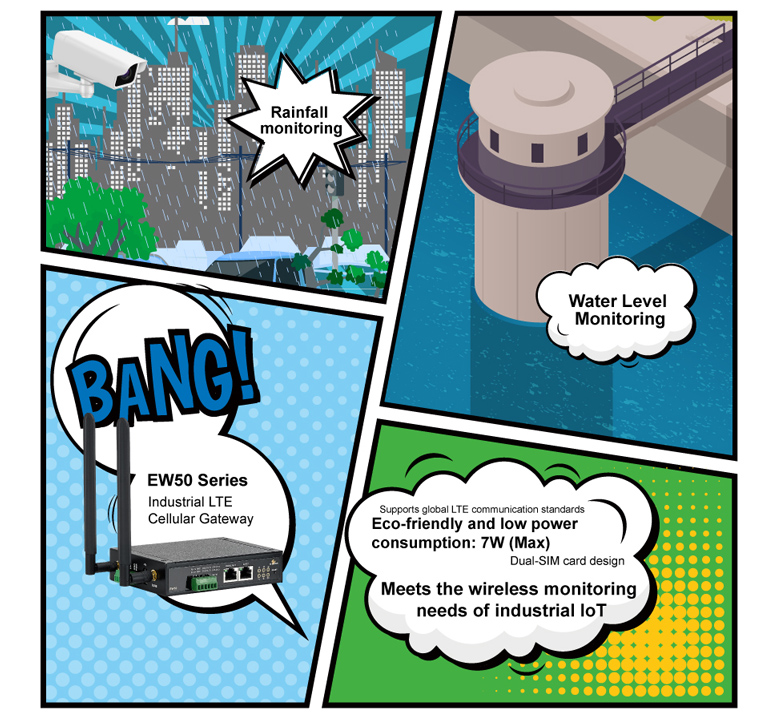Taiwan is surrounded by the ocean and has a flat terrain, which often leads to flooding during typhoons and heavy rains. The government is actively promoting disaster prevention and early warning plans, including the establishment of a water monitoring network and the development of facilities such as flood sensors and image recognition systems. Flood sensors, which utilize smart sensing components and communication modules under IoT architecture, are a new weapon that provides real-time and accurate detection of flood situations.

Application of sensor data in emergency response
1. Emergency response personnel can access historical data of flood sensors through a dedicated system, and once the water level reaches a certain depth, it will be included in the disaster control list.
2. The system provides significant information to the public, allowing the public to access flood mapping, flood detection, and data history.
This is made possible through transmission technology, which combines front-end monitoring equipment with back-end information management platforms. Integrating flood warning models improve disaster prevention and response planning by reducing the response time and providing quantifiable and accurate information.
EtherWAN's EW50 Industrial LTE Cellular Communication Gateway and EW200 Industrial 4G LTE Mobile Communication and Wi-Fi Gateway can accelerate the deployment of IoT applications in flood warning systems in a safe and stable manner. We provide real-time, stable, and reliable data transmission of CCTV images and monitoring equipment such as water level meters and rain gauges, which are deployed at different warning and monitoring points. These devices capture on-site monitoring images and data and transmit them to the backend system in real-time for control, in order to meet the warning requirements for safeguarding the living environment.
In the architecture of a smart city, the formation of various convenient measures and mechanisms relies on the accumulation of big data. Data is collected through various sensors, data acquisition devices, and image analysis, among other methods. The data is then transmitted to the backend system for professional judgment and consideration through various network connection methods.
Considering the difficulty of obtaining power as well as the overall construction and maintenance costs of the project, the best network connection method for many applications is the "device/pipe/cloud" model.
How to choose your wireless product?
Simple, cost-effective options to consider
- Non-real-time data transmission, low data volume, and installation locations where it is difficult to obtain a stable external power supply.
- The monthly transmission and maintenance cost should be less than US$ 2. Consider using low-power and energy-efficient NB-IoT or Cat.M1 transmission.
Considerations for real-time data transmission are needed
- Real-time data transmission is required.
- If you need to connect to an IP camera, it is recommended to choose 4G LTE transmission.
EtherWAN products applied in IoT

1. What are the characteristics and differences between NB-IoT and LTE-M (Cat.M1)?

2. What factors need to be considered in addition to selecting a transmission method in industrial IoT applications?
- The factors to consider in industrial IoT applications, in addition to selecting the transmission method, include the installation environment, the difficulty of obtaining external power, the need for which edge devices, including whether there is an analog signal input interface, the data acquisition type, the method of transmitting data to the backend, and intelligent alert mechanisms.







